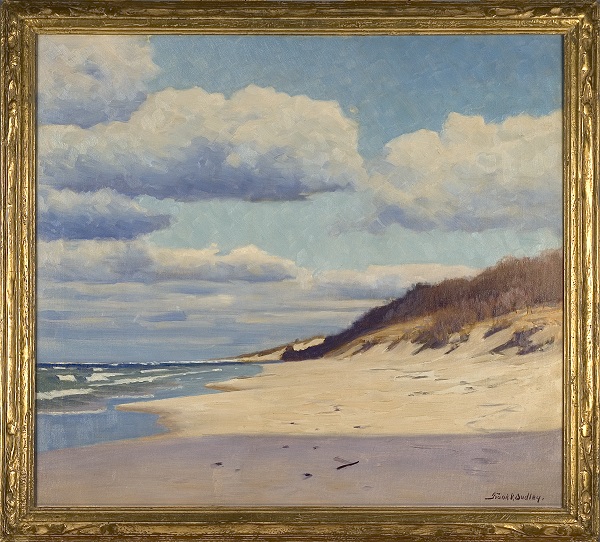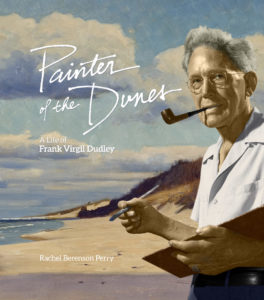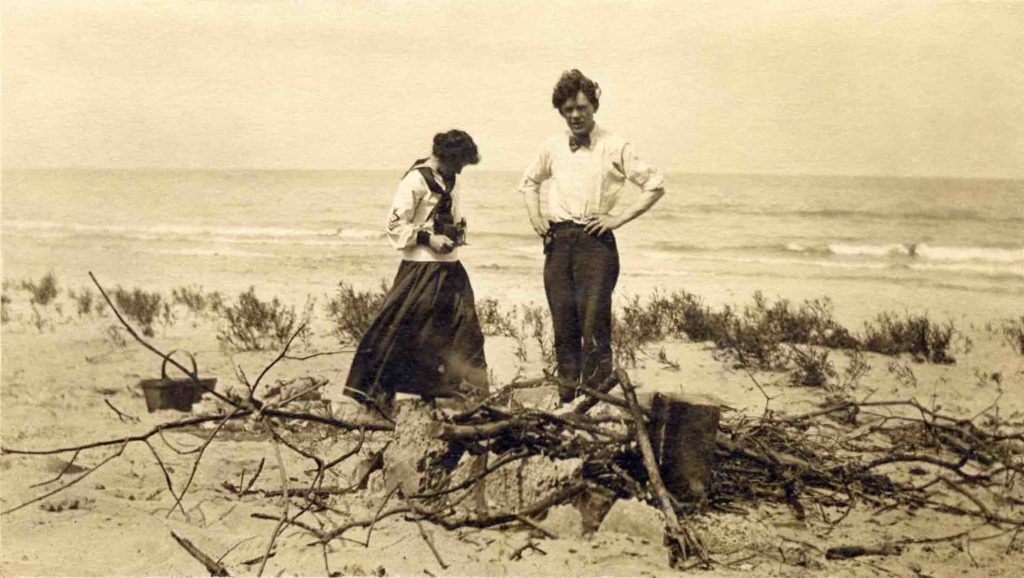
Plan your visit
Painter of the Dunes: A Life of Frank Virgil Dudley
July 23, 2021

Once his photographer brother introduced him to the sand dunes of Indiana and vicinity in 1911, Frank Virgil Dudley devoted the rest of his creative life to painting landscapes of the area’s stunning scenery and unique diversity, becoming one of the state’s preeminent artists. His well-earned titles of “Seer of the Dunes” and “Painter of the Dunes” allude to his almost obsessive subject matter as well as his activism to save the dunes.
The focus of nearly a century of battles between environmentalists and developers, the Indiana Dunes lie within a few hours’ drive to the south and east of Chicago. The desire to protect the lakeshore from industrial construction and to preserve it for recreation and scientific research unified preservationists, artists, outdoor enthusiasts, and scientists.
Noted Hoosier author Rachel Berenson Perry, fine arts curator emerita of the Indiana State Museum, where she organized and curated all the art exhibitions from 2003 through 2011, has captured Dudley’s life and work in the new Indiana Historical Press youth biography Painter of the Dunes: A Life of Frank Virgil Dudley. Here she answers some questions about her new book and Dudley’s career.

Do you remember when you first came across Dudley’s work on the Indiana Dunes?
I’m pretty sure I’d been aware of Dudley’s work, but when I became fine arts curator at the Indiana State Museum in 2003, the impressive walls of Dudley artwork (there are 72 of his paintings in the museum collection) could not be ignored. His work looks rather simple at first, but when studied, his compositions and dark/light values are spot-on.
What was it about the Indiana Dunes that drew Dudley to them?
I believe the Indiana Dunes drew Dudley gradually because, for a kid who played in old-growth forests that existed near his hometown of Delavan, Wisconsin, in the late 1800s, the Lake Michigan shoreline was like an alien land. But the wildness and freedom of the Indiana Dunes, so near his Chicago home, called to him. He was not a city boy at heart.
How important were Dudley and his wife in the effort to preserve the Indiana Dunes?
Frank and Maida Dudley spent a tremendous amount of time and effort, especially after building their Dunes Studio in 1921, to introducing and hosting anyone and everyone to the magic of the dunes through their Sunday open house teas. They also performed popular traveling programs where Frank talked and demonstrated painting Dunes topography and Maida sang operetta songs. They faithfully participated in annual programs hosted by the Prairie Club and The Friends of Our Native Landscape. Needless to say, Dudley’s paintings of the Indiana Dunes in Chicago exhibitions also helped create enthusiasm for the beauty of the area. The Dudleys always felt that the more people who were aware of and appreciated the dunes, the more allies there would be for the region’s preservation.

Maida Lewis and Frank Dudley on the beach at Indiana Dunes, May 30, 1911. Photo by Clarence Dudley. Dudley Family Archives, courtesy of James R. Dabbert
Did you find out anything surprising about Frank Dudley when you were researching your book?
I think one of the most surprising and touching things I discovered about Dudley was the fact that both of his parents were deaf. This may have helped explain his penchant for illustrating things on paper, but it also contributed to his character. Deaf communities were very close, and their ways of interacting were perhaps more deliberately caring and engaged than people who don’t consciously rely on observation of facial expressions and body language.
How do you “rank” Dudley against other famous Indiana artists as The Hoosier Group?
It would be impossible to “rank” Dudley against other famous Indiana artists like the Hoosier Group since they were doing completely different styles of work. The Hoosier Group (T. C. Steele, J. Ottis Adams, William Forsyth, Otto Stark, and Richard Gruelle) were actually a generation before Dudley. They all studied in Europe and, although they returned to Indiana to paint what they knew best, their influences and training were factors in their development. The thing they had in common with Dudley was their passion for the Indiana landscape.

Photo of Duneland Studio elevation from beach.
Dudley Family Archives, courtesy of James R. Dabbert.
Can you think of another Indiana artist deserving of more attention that has yet to be written about?
There are countless other Indiana artists, historical and current, who deserve more attention, particularly women, Black, and artists from ethnic groups who emigrated to the Hoosier State. A few historical Indiana artists that come to mind are Winifred Brady Adams, Carolyn Peddle Ball, Maud Eggemeyer, Lucie Hartrath, the Overbeck sisters, Olive Rush, William Edouard Scott, John Hardrick, Hale Woodruff, and William Majors.
What are you working on next?
I’m interested in writing about “the business of art,” particularly how T.C. Steele’s “social intelligence,” alliances with important Indianapolis people through his portraiture, and promotion of Indiana landscapes helped to shape early Indiana artwork and left a significant legacy of his own.









